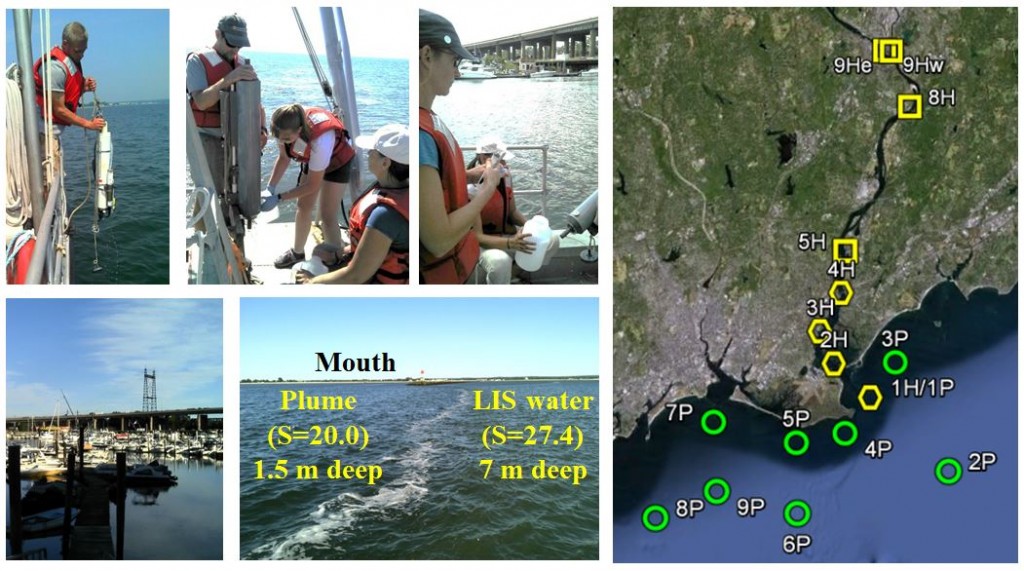This Connecticut Sea Grant project focuses on “Measuring and Predicting the Fate and Transport of Perfluorinated Contaminants Entering the Long Island Sound from Municipal Wastewater in the Housatonic Watershed.” The principal investigators are Mike Whitney and Penny Vlahos at UCONN Marine Sciences. Joanne Elmoznino (PhD student), Kristin Raub (Masters student), Adrian Kowalski (undergraduate student) have made significant research contributions to this project. Our efforts also have been assisted by Turner Cabaniss and Dave Cohen (UCONN Marine Science & Technology Center), Yan Jia, Steve Schmidt, and Qiang Sun (PhD students), Kayla Hodge (undergraduate student), and the support of the UCONN Department of Marine Sciences.
Long Island Sound (LIS) is an urban estuary confronted with water quality issues. The is a critical need to assess loading, mixing, transport, and impacts of emerging contaminants. Perfluorinated compounds (PFCs) are used in carpets and fabrics, food packaging, and fire retardants. PFCs, like many organic contaminants, are persistent, bioconcentrate, and are toxic at low concentrations. This research project is part of the first efforts to track PFCs in LIS.

The research tests two hypotheses:
1. Municipal wastewater treatment plants (WWTPs) input PFCs into the Housatonic River system that elevate PFC concentrations in the Housatonic Estuary and the Long Island Sound.
2. The time-varying exposure areas in the LIS increase a) with higher Housatonic River discharge levels that create a larger river plume and b) for individual PFCs that remain in solution at higher salinities.
These hypotheses are being tested with an interdisciplinary research using a combined observation-simulation approach. The observations are necessary to quantify PFC inputs, measure dissolved and particulate concentrations in the estuarine waters, and measure physical water properties that influence PFC concentrations. Models are necessary to track the Housatonic plume and better resolve temporal variations and spatial distributions of PFCs in the Housatonic Estuary and LIS. The simulations are quantitatively compared to observations to determine time-varying concentrations and exposure areas for targeted PFCs.

To date, the main research findings are:
- During summer low flow conditions (July 2012), the upper Housatonic and Naugatuck Rivers are the largest PFC sources; estuary WWTPs are 10% of PFC inputs.
- Observations detected PFCs in Housatonic estuary and plume region in Long Island Sound; the salinity trend shows the influence of conservative mixing.
- During high flow conditions (June 2013), the observed PFOA load out of the Housatonic is 50 times the low-flow load (July 2012) because the concentrations and river discharge both are higher.
- Model results indicate the time-varying exposure range is larger for perfluorooctanoic acid (PFOA) than perfluorooctane sulfonate (PFOS) because more PFOS adsorbs to sinking particles.
- Model predictions suggest that over half of PFOA and almost all of PFOS settles out in LIS; PFOA reaches the shelf, but little of PFOS does.
- Observations and model results suggest other rivers contribute contaminants to the LIS area outside Housatonic.


This project provides vital information for effective science-informed management of the Long Island Sound and its ecosystems. Further research still is necessary to resolve the time variability of PFCs entering from the Housatonic and to determine the relative importance of other PFC sources for the Long Island Sound.